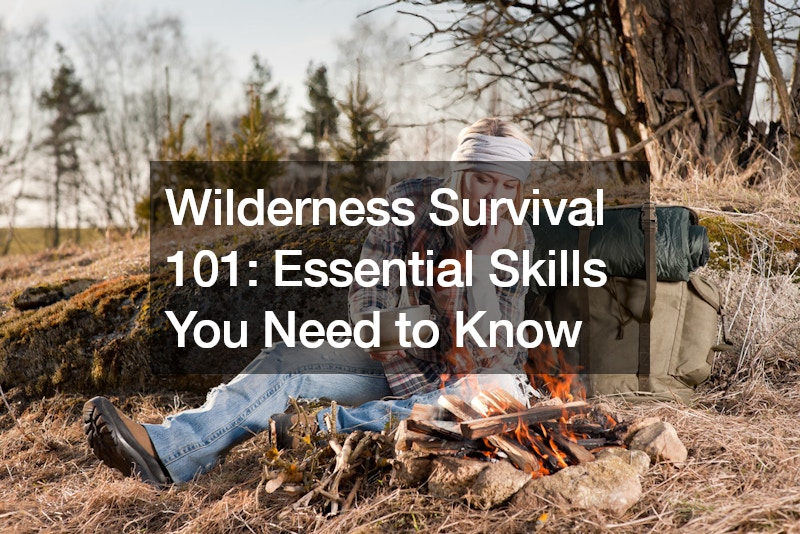

Survival in the wilderness is an art requiring a blend of knowledge, resourcefulness, and resilience. Whether you’re an avid outdoor enthusiast or just someone who enjoys the occasional hike, understanding essential survival tactics can mean the difference between comfort and catastrophe in the great outdoors. From building shelter to finding food and signaling for help, mastering these skills is necessary for anyone venturing into nature’s domain.
Firecraft: The Heart of Wilderness Survival
One of the first skills every survivalist should possess is the ability to create fire. Fire not only provides warmth but also serves as a means of cooking food and signaling for rescue. Knowing how to identify and gather suitable firewood, as well as starting a fire using various methods such as friction, is crucial.
Not to mention, understanding the importance of fire safety and efficient fire management can ensure long-term survival. When building a fire, select a suitable location away from flammable materials, maintain sufficient clearance around the site, and start with a small fire before gradually increasing its size. Use dry, seasoned wood to minimize smoke and maximize efficiency, and never leave the fire unattended. Extinguish the fire completely by dousing it with water and stirring the ashes until cool. Practicing Leave No Trace principles ensures minimal impact on the environment, so be sure to clean up the fire site before departing.
Navigation: Finding Your Way Home
Navigating the wilderness without the aid of modern technology is a skill worth honing. Learning how to read the stars, particularly the North Star (Polaris), can serve as a reliable compass when traditional methods fail.
Additionally, understanding celestial navigation techniques, such as using the position of the sun or moon to determine direction, can provide valuable backup navigation methods. Knowing how to use natural landmarks, such as rivers and mountains, can also help orient oneself in unfamiliar terrain.
Foraging and Hunting: Sustaining Yourself in the Wild
Finding food in the wilderness often requires resourcefulness and patience. Foraging for edible plants and fungi, such as dandelions and wild garlic, can supplement your diet and provide essential nutrients. Understanding which plants are safe to eat and which are poisonous is vital for avoiding potentially dangerous situations.
In addition to foraging, learning basic hunting and trapping techniques can provide a sustainable source of protein. To maximize your skills as a hunter and ensure your safety in the wild, understanding animal behavior and having the right tools are crucial. With simple tools such as spears and traps, you can increase your chances of securing a meal in the wild. Having a reliable hunting knife is also essential for any wilderness survivalist. A well-crafted hunting knife can serve many purposes, from skinning and gutting game to preparing wood for shelter building.
Shelter Building: Protection from the Elements
Building a shelter is essential for protecting yourself from the elements and maintaining body temperature in harsh conditions. Knowing how to utilize natural materials such as branches, leaves, and moss to construct a sturdy shelter can mean the difference between comfort and exposure.
Whether it’s a lean-to, debris hut, or a simple tarp shelter, understanding various shelter designs and construction techniques is crucial. Moreover, knowing how to select an appropriate site for your shelter, such as a flat area with natural windbreaks, can maximize its effectiveness. Once your shelter is built, insulating it from the cold ground by layering pine boughs or leaves can help trap body heat and keep you warm throughout the night.
Signaling for Help: Getting Rescued
In the event of an emergency, knowing how to signal for help can be a lifesaver. Techniques such as using a flare gun or creating smoke signals can attract the attention of potential rescuers from a distance. By understanding the basics of signaling and knowing when and how to deploy these methods effectively, you can significantly increase your chances of being rescued in a timely manner.
However, it’s important to note that not all situations may allow for the use of specialized signaling equipment. In such cases, improvisation becomes key. Utilizing reflective surfaces like mirrors or metal objects to catch the sunlight and signal for help, or even creating audible signals by banging rocks together or using a whistle, can be effective alternatives. Building large ground markers or writing distress messages in open areas can also aid in attracting attention from search parties or passing aircraft.
Staying Sane: Mental Resilience in Survival Situations
Perhaps the most overlooked aspect of wilderness survival is maintaining mental resilience. Staying positive and focused in the face of adversity is essential for making sound decisions and staying alert to potential dangers. Celebrating small victories, maintaining a sense of community if you’re with others, and setting daily goals can help boost morale and keep you motivated during challenging times.
Closing Thoughts
Mastering essential survival tactics is crucial for anyone venturing into the wilderness. By learning how to create fire, navigate, forage for food, build shelter, signal for help, and maintain mental resilience, you can confidently explore the great outdoors while mitigating the risks associated with wilderness survival. So, whether you’re planning a weekend camping trip or going on a backcountry adventure, remember to equip yourself with the skills necessary to thrive in nature’s vast and unpredictable landscape.







